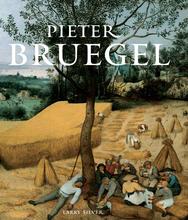More about The Return of the Herd (Autumn)
- All
- Info
- Shop

Contributor
Pieter Bruegel the Elder's Return of the Herd is a magnificent example of his visionary style, and even left an influence on Rubens, who owned more than ten Bruegel paintings.
An important piece in Breugel's oeuvre, the painting also gave inspiration to Jan Steen.
The brilliant employment of sunlight, animal movement, and color distinguish the painting, but it's the compelling narrative intensity which qualifies it as a masterpiece. The Return of the Herd is such a milestone of Bruegel's work that preservationists use it to verify the authenticity of other works with Bruegel's name on them. Margaret A. Sullivan, for example, questions the authorship of Numbering of Bethlehem because of the excessively precise detail of the tree and landscape compared with the "subtlety of sky and trees" in Return of the Herd.
Studying Return of the Herd is a good way of counterbalancing the public interest in the cowboy imagery of the U.S. West. Whereas the U.S. cowboy is a colonizing individualist, reacting before he thinks and using violence as his primary means of self-protection, the cowherd figure of antiquity is much more integrated with the regular cycles of the earth, plants and animals, and is almost always unarmed, as are the men in Bruegel's painting.
The colors and tones of their clothes mirror those of the animals, and the relationship of shepherd and flock is an ancient metaphor for spiritual guidance. Although Bruegel's people eat the animals, they understand that they must cultivate a good relationship with them in order to maintain the survival of the herd. The painting implies that because, and not despite, the fact animals do not share our cognitive abilities, we must treat them with respect and kindness, and see them as mediators in a network running between the earth, ourselves and higher powers.
Sources
- Braham, Helen. The Princes Gate Collection. London: Courtauld Institute Galleries, 1981.
- Forty, Sandra. Bruegel. Charlotte, NC: TAJ Books International, 2014.
- Franits, Wayne. Dutch Seventeenth-Century Genre Painting. New Haven: Yale University Press, 2004.
- Rockett, Paul. Pieter Bruegel the Elder. New York: Rosen, 2015.
- Sullivan, Margaret A. Bruegel and the Creative Process, 1559-1563. New York: Routledge, 2017.
Featured Content
Here is what Wikipedia says about The Return of the Herd
The Return of the Herd is a panel painting in oils by the Netherlandish Renaissance artist Pieter Bruegel the Elder, made in 1565. It is one in a series of six works (High Springtime is presumed lost) that depict different seasons. The painting is now in the Kunsthistorisches Museum, Vienna, Austria. The autumnal colors of the landscape and the bare trees connect this particular painting to October/November.
The surviving Months of the Year cycle are:
-
The Return of the Herd
Check out the full Wikipedia article about The Return of the Herd














In The Return of The Heard, the artist, Pieter Bruegel, uses colors to help his painting come alive. The sky is clear with dark clouds coming over as the herd moves along with it. The colors throughout are gloomy and dark giving off a glum setting. Shadows are coming down from the sky to show the darkness coming onto them. It is foreshortening with some images further away are smaller while the closer ones are larger. The trees are bare of leaves adding more to the dark and cold tone of the art. The painting is of physical nature depicting an image that could be realistic. It is filled with shapes and lines that one would see in real life.